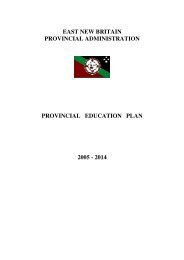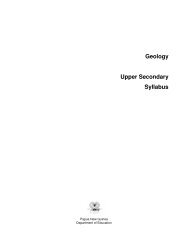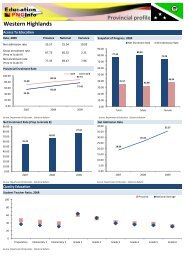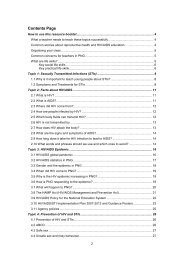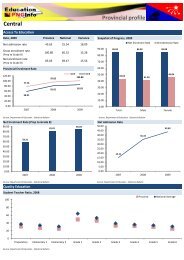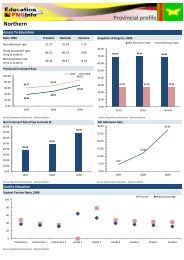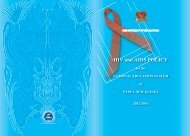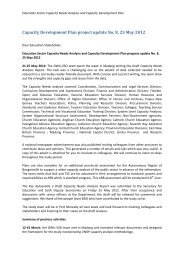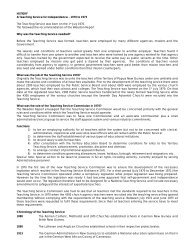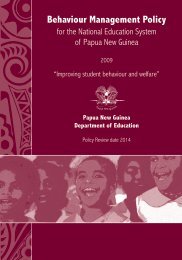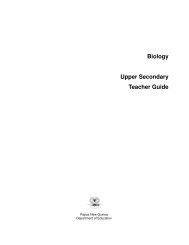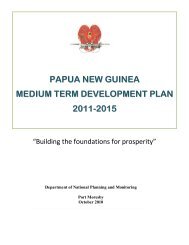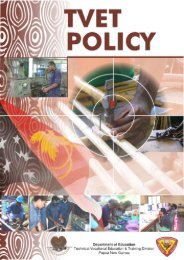English Lower Secondary Syllabus - Department of Education
English Lower Secondary Syllabus - Department of Education
English Lower Secondary Syllabus - Department of Education
You also want an ePaper? Increase the reach of your titles
YUMPU automatically turns print PDFs into web optimized ePapers that Google loves.
<strong>Lower</strong> <strong>Secondary</strong> <strong>Syllabus</strong>Student-centred learningThe <strong>English</strong> syllabus uses a student-centred approach as a vehicle to guideand facilitate students’ learning. A student-centred approach providesstudents with the opportunity to practice and develop critical and creativethinking, problem solving, decision-making as well as range <strong>of</strong> practical skillsand knowledge.A student centred approach means that teaching and learning strategiesneed to be flexible to cater for individual differences and learning should berelevant and meaningful to the experiences and needs <strong>of</strong> the students. Astudent-centred approach allows teachers to be more flexible in determiningthe most effective ways to help all students achieve the <strong>English</strong> learningoutcomes. Students learn best by being actively active involved in theirlearning through reading and viewing, writing, speaking and listening, andtaking opportunities to be creative.In <strong>English</strong>, students are encouraged to think critically about what they arelearning and to take responsibility for their learning. They learn to teach eachother and to learn from each other, to work cooperatively and to workindividually. They know that learning has a serious purpose. They enjoyusing a wide range <strong>of</strong> texts and developing a wide variety <strong>of</strong> speaking,reading and writing skills. Students learn how to communicate well withothers, how to work things out for themselves and how to get the informationthey need. They become confident through being given the opportunity touse their knowledge and imagination in speaking and writing creatively.Inclusive curriculumAll students are individuals and all have the right to quality education in orderto reach their full potential. An inclusive curriculum uses content, languageand teaching methods that take account <strong>of</strong> all students. All <strong>Lower</strong> <strong>Secondary</strong>syllabuses value the experiences and knowledge <strong>of</strong> all students, regardless<strong>of</strong> gender, ability, geographic location, religious and cultural background, orsocioeconomic status.When interpreting and implementing syllabus learning outcomes teachersmust ensure that the teaching, learning, and assessment activities areinclusive <strong>of</strong> all students. The following statements identify importantrequirements <strong>of</strong> an inclusive curriculum.• All students have fair access to resources such as time spent with theteacher, space in the classroom, books and equipment, outside space.• All students have equal opportunity to participate fully in teaching,learning and assessment activities.• The curriculum includes and addresses the needs and interests <strong>of</strong> allstudents; girls as well as boys, gifted students, students with disabilitiesand students from different cultural and religious backgrounds.• The experiences and knowledge <strong>of</strong> all students are valued by teachersand are reflected in classroom practice.• Teaching and learning methods cater for different learning styles byallowing students opportunities to learn in different ways.• Teachers use a variety <strong>of</strong> assessment methods that give studentsopportunities to demonstrate achievement <strong>of</strong> learning outcomes.7



